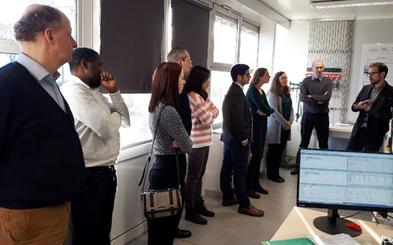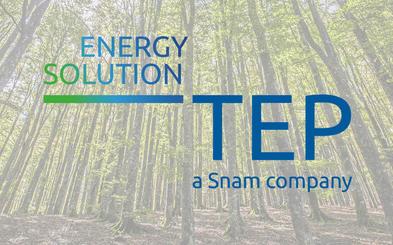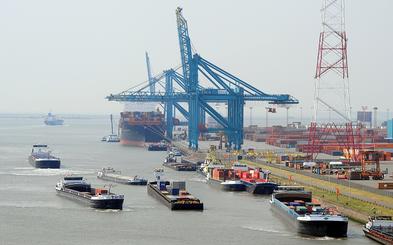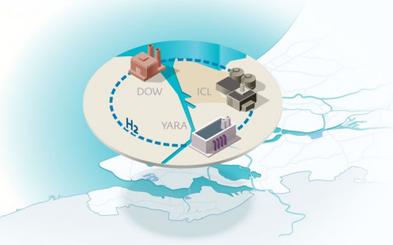INNOVATIVE PROJECTS PLATFORM
To efficiently build on its Members' actions to promote or contribute to innovative technologies, regulation and business models, and partnerships across the value chain, ENTSOG has created the Innovative Projects Platform to map TSOs’ projects and partnerships on Research, Development and Innovation (RDI) activities for the energy transition.
This public platform provides information and links to enable exchange of best practices applied at national level and in some cases, across borders through partnership efforts.
These innovative solutions focus on topics such as repurposing infrastructure for renewable gases and projects for hydrogen, CCS and CO2 transport, biogas, energy system integration. These innovative applications support the achievement of the current EU goals of reducing GHG emissions and reaching the decarbonisation goal of net-zero by 2050.
*Disclaimer: The content published on this page is information owned by TSOs and not by ENTSOG. It is therefore published on behalf of TSOs. Please note terms and conditions of use of the website (including article 7) are fully applicable to this page.
Technology
Discover here how technologies can optimise the usage of the grid, make digital layer connections and support decarbonisation of the EU gas system. Technology R&D has a vital role in the energy transition. ENTSOG Members (TSOs) are developing new and innovative technologies to offer sustainable solutions for the gas sector.
Regulation & Business Model
Stay informed on how ENTSOG Members (TSOs) engage in development of the new energy products and services to foster uptake of renewable and decarbonised gases into the grid.
Partnership
Look at new partnerships and initiatives formed by ENTSOG’s Members (TSOs). They are actively working together as well as with various stakeholders on projects aimed at decarbonisation of the gas sector and of the whole EU economy.
Hydrogen
Hydrogen is a gas under standard conditions and there are also different hydrogen derivatives, such as ammonia and synthetic electrofuel. sHydrogen can be produced from diverse process technologies, such as electrolysis and steam-methane reforming (with or without carbon capture and permanent storage of this carbon to reduce emissions).
Repurposing for Renewable Gases
Repurposing of pipelines for renewable gases transport (e.g. hydrogen) is a cost effective way to meet decarbonisation goals and can be undertaken without compromising the ability of the natural gas network to ensure security of supply.
Biogas
Biogas is obtained via the anaerobic decomposition of the organic matter. After the process of upgrading, biogas becomes biomethane with the same quality standard as natural gas and can be transported via the existing grid infrastructure.
CCS and CO2 Transport
Carbon Capture and storage is the process of capturing CO2 from a set of possible sources, such as for example fossil fuel power plants, transporting it to a storage site, and depositing it underground on a permanent basis. The aim is to prevent the release of CO2 into the atmosphere.
Energy System Integration
Integrated infrastructure planning for electricity and gases is essential to support the decarbonisation of the energy system sector, particularly for facilitating the transport of renewable gases like hydrogen.
CNG
Compressed Natural Gas (CNG) is a fuel source that is made from compressing natural gas to less than 1% of its standard atmospheric volume. CNG combustion produces fewer climate-impacting gases than other fossil fuels.
Digitalisation
Digitalisation can bring various benefits to day-to-day operations such as enhanced control over the gas quality and cost reductions. TSOs look at data-driven solutions to boost performance, efficiency and competitiveness.
Heating & Cooling
Cutting the energy consumption in heating and cooling in buildings and industry can be achieved through various technologies. TSOs are working on developing cost-efficient solutions for the decarbonisation of this sector.
Certification of green gases
To ensure the cross-border scale up and tradability of renewable, decarbonised and low-carbon gases. This can be achieved via pan European Guarantees of Origin and Certification Schemes.
Ontras Gastransport GmbH, Open Grid Europe
ONTRAS and Open Grid Europe partner with Volkswagen
Strategic partnerships with with the goal of expanding the current CNG-fueling station infrastructure. Increasing the amount of biomethane in CNG offers massive potential for CO2 reductions. Therefore, ONTRAS aims to ensure that the highest-possible share of biomethane will be offered at its fueling stations.
Contact: ralf.borschinsky@ontras.com
GRTGaz
Standardised quality measurements for European biomethane (RICE)
This project aims to develop new techniques to measure the level of various compounds – compounds that may have an impact over a certain concentration – before injection of the biomethane into the network.
Contact: jeanmarc.brimont@grtgaz.com
Energinet
Digital certificates
Energinet issues digital certificates for injected biomethane which represent the “green” value of energy produced from biogas, a renewable energy source. The green value of the upgraded biogas may be traded commercially.
Contact: jbg@energinet.dk
Snam Rete Gas S.p.A.
TEP Energy Solution
The acquisition of TEP Energy Solution (TEP), one of Italy’s leading enterprises in the energy efficiency sector, is part of Snam’s strategic plans aimed at facilitating decarbonisation and better energy use in the areas where it operates. Snam intends to accelerate TEP’s growth process, with the support of the company’s management, and facilitate the transfer of energy efficiency know-how and technologies from large businesses to small and medium-sized enterprises and local institutions.
Contact: salvatore.ricco@snam.it
Swedegas AB
Virtual trading using the Green Gas Principle
The Green Gas Principle allows biogas producers and consumers who are connected to a gas network to trade virtually in biogas in the same way that trading takes place in renewable energy. The principle is based on tax exemption and sustainability features being linked to the biogas via agreements and not via its physical route. As the infrastructure has not yet been developed to the same extent as in many other European countries, the Green Gas Principle has been established in Sweden to facilitate biogas trading between different gas networks.
Contact: hanna.paradis@swedegas.se
Fluxys Belgium S.A.
CO2 Capture in Port of Antwerp
Eight leading players in the Antwerp Port area – Air Liquide, BASF, Borealis, INEOS, ExxonMobil, Fluxys, Port of Antwerp and Total – have signed a collaboration agreement as a first move towards the possible development of carbon capture, utilisation and storage (CCUS) infrastructure. The consortium will carry out a joint study into the economic and technical feasibility of such facilities. CCUS applications can make an important contribution towards achieving climate goals.
Contact: michel.vandenbrande@fluxys.com
Elering AS
Biomethane registry
In order for biomethane to reach consumers, Elering will create efficient conditions for biomethane producers to connect to the gas network, advise producers on finding connection options, and allow filling stations to quickly join new and existing gas networks. In addition, Elering will create and implement a certificate of origin system to verify the origin of gas for consumers.
Contact: vreni.veskimagi@elering.ee
Snam Rete Gas S.p.A.
I-GAP project
The project aims to develop the technology of small gas absorption heat pumps (GAHP) to offer an economically sustainable and easily integrated solution for heating residential buildings. In particular, the project will quantify the energy, environmental and infrastructural benefits deriving from the widespread application of this technology.The main advantages of this technology are the ease of installation, lower operating costs and lower emissions of climate-changing gases. Duration: 01 October 2016 - 04 June 2020
Contact: Giovanni.Angius@snam.it
Gasunie
Hydrogen pipeline
The hydrogen released from the Dow's factory is used as a feedstock for high-quality products of Yara through a existing Gasunie pipeline which has been prepared for hydrogen transport.
Enagás S.A.
SUN2HY (Sun to Hydrogen)
This project focuses on the development of a disruptive photoelectrochemical cell that will be used as a reactor for the direct transformation of solar into chemical energy. Innovative materials and new structures are used achieving a remarkable efficiency. This promising technological route allows the competitive industrial production of clean and storable fuels directly from sunlight and water. The project started in September of 2018 and will last for 2 years. The main partners leading the project are Repsol and Enagas.
Contact: msanchezd@enagas.es













